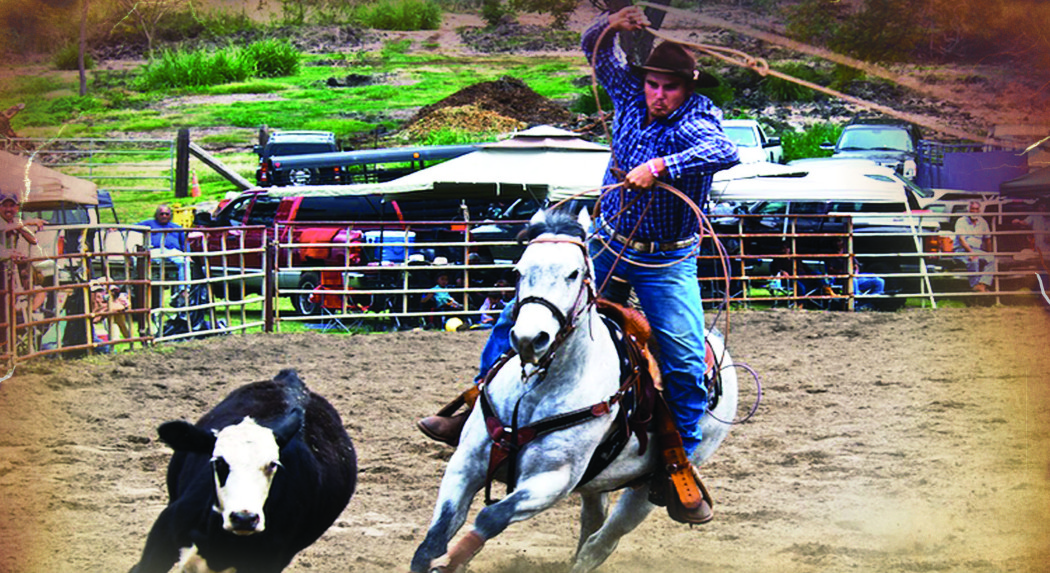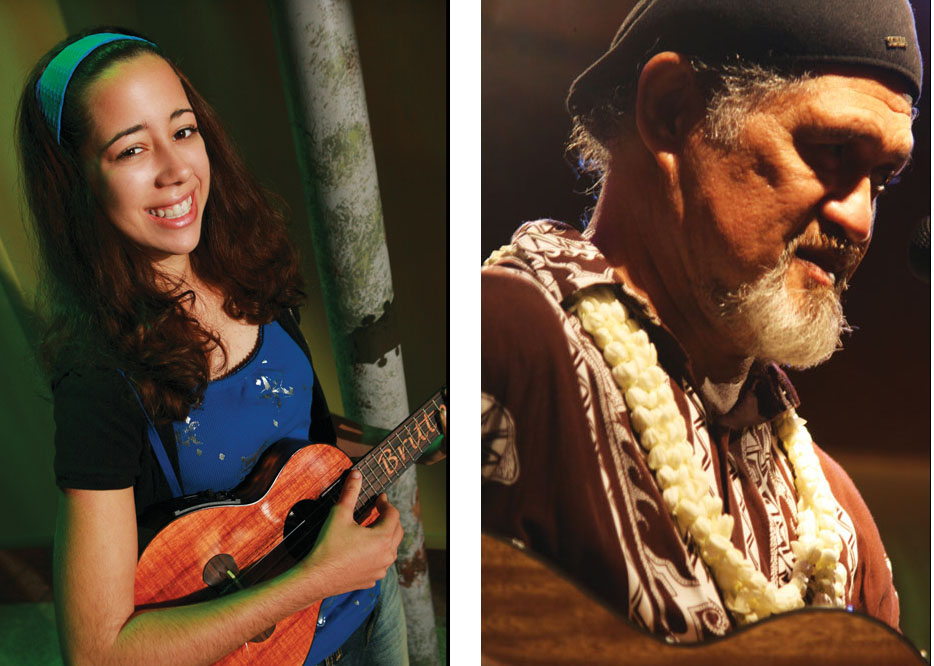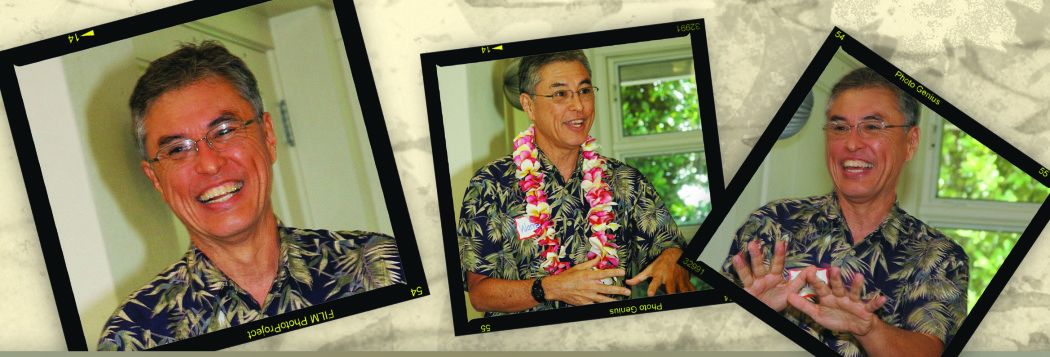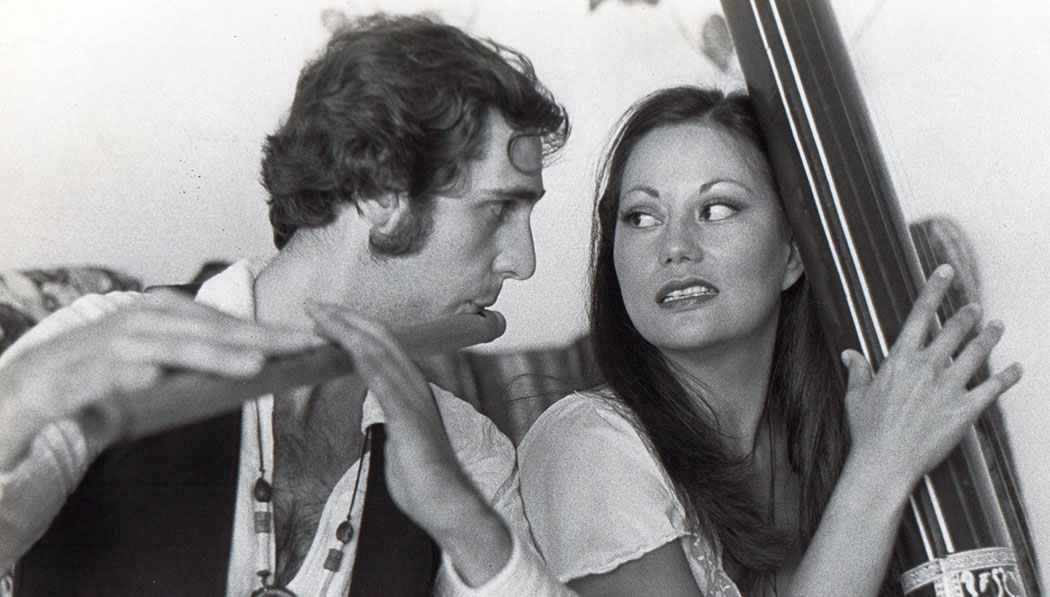
Ranch to Rodeo: Hawai‘iʻs Paniolo Culture
 By Ashley Welton
By Ashley Welton
Folks from around the world associate Hawai’i with sun, sandy beaches and surfing, but they are often unaware of the importance, impact, and prevalence of ranching on the islands. Paniolo culture, and the families that have grown up within it, is a quiet yet integral fixture to life in Hawai’i—and has been for nearly 200 years.
Ranching and rodeos can be overlooked, even amongst those who live here, but anyone who’s ever attended a rodeo on Hawai‘i Island knows that they have a strong and loyal following. The paniolo are the heartbeat of our hills. So why don’t you see famous Hawaiian cowboys whoop-hollerin’ and ridin’ bulls on televised rodeos? Because they are a different breed with a unique lifestyle and a deeply ingrained set of values.
In order to understand the Hawaiian rodeo culture, you must first understand paniolo culture, because one does not exist without the other.
Let us rewind a couple of years: it’s 1793 and King Kamehameha the First has been gifted five longhorn cows and one bull by Captain George Vancouver. The cattle are shipped to the King’s residence in Kealakekua Bay, Hawai’i, but Captain Vancouver knows that the beach is no place for a cow. He suggests they be taken upland to a cool area where they can be free to roam and propagate. The cattle are moved to Hualalai Mountain at an elevation of about 2,200 feet where the Hawaiians build the only kind of wall they are familiar with, a six-foot-wide by six-foot-high, stone wall, thus creating the 460-acre Pa Nui, or “big pen.” The King declared the cattle kapu (off-limits) for about ten years, which allowed them just enough time to breed, break out, and begin to wreak havoc on the land. During the early 1800s, the only methods of controlling the thousands of feral cattle were to shoot or trap them. The Hawaiians chased the cattle all over the land without putting much of a dent in the wild herds.
Fast forward to 1830: King Kamehameha III is the reigning sovereign. The cattle continue to be a menace to the land, stomping through gardens and uprooting native forests, but their hides and salted meat are of great value, thus proving to be a profitable, albeit unorganized, business for Hawai’i. The solution presents itself in the form of three Mexican vaqueros. In 1833, Kamehameha III, after witnessing Mexican cowboys ensnare animals with rawhide loops in California, brought the vaqueros and their horses to Hawai‘i Island to teach the Hawaiians how to manage the cattle. The vaqueros came with saddles, horsemanship, herding techniques and a lifestyle not unlike that in the islands. Hawaiians named these foreign cowboys paniolo. Because of their connection to the land, skilled craftsmanship, athleticism and grace, the Hawaiians took well to the vaquero’s teachings.
Long after the vaqueros left, the paniolo continued to develop a culture and ranching practice that is unique to Hawai’i. The land always dictates the lifestyle, and the steep, rough, and densely forested terrain of Hawai‘i shaped the skills of the paniolo. Imagine yourself in a thick ‘ohia forest on the side of a steep mountain slope; the ground, made of a‘a lava and thick grass, is tough and slippery. Now, find and rope your cattle—it is a unique skill set indeed.
A paniolo, however, is more than a trainer of horses and breeder of cattle; he is a steward of the land, a protector of family, and has an acute appreciation of nature, music, and craftsmanship. Throughout the 1800s, paniolo culture grew deep roots as ranching thrived on all the islands. In addition to the Parker Ranch in Waimea, which, to this day, is one of the largest ranches in the United States, were a few other sizeable ranches spread across the island of Hawai’i. So how is it, with these ranch monopolies, that paniolo heritage continued to thrive throughout the entire island? Why didn’t the cowboys move onto the large ranches and leave the rest of the island to farm and fish? Simple, there were cattle everywhere.
During the Mahele (division) of 1848, land that had never been privately owned was suddenly available for claim. Many Hawaiians ended up with pieces of land that they already worked, but they also ended up owning whatever lived on that land, which included the cattle, and they were responsible for keeping them within boundaries. Collectively, on the island, the Hawaiians owned more cattle than any of the large, foreign ranches, and they were left with the task of maintaining them, which required paniolo skills.
So, when did that dirt-stomping, cattle-wrangling, spur-sporting time that we know as a rodeo come into being? The first competitive roping began in the late 19th century, but it wasn’t the super-star bull riding and paparazzi-peppered roping competition that we now recognize as rodeo. It started as good fun between families.
In an industry where there are no days off, the rodeos were a venue for friendly competition between ranches and ranching families, as well as a way of showing off better breeds of horses and newly acquired and honed skills. The events of a rodeo are based on the day-to-day requirements of ranch work. Roping, tie-down, and, unique to Hawai’i, Poo Wai U, are all techniques you need to know in order to be a good cowboy. Nobody was looking for his eight seconds of fame; there was far too much work to be done.
A paniolo family has a huge obligation to the land and its people. Ku’ulani Auld of the Mahealani ranch in Kona talks about growing up “in the hills.” It’s hard work but “this land is our kuleana (responsibility). We are stewards of the land that has been in our family for many years, and it is our responsibility to care for it” so that the future generations may do the same.
There exists a vast difference between the paniolo culture in Hawai’i and the rodeo culture on the mainland. In Hawai’i, the rodeo families are paniolo families; they are ranching families. On the mainland, there is often a difference between a ranching family and a competitive rodeo family. The cowboys are athletes, and their life is about going from one rodeo to another in order to compete. The rodeo is sport, and there is big money in that.
Only recently has rodeo been taken seriously as a competitive sport in Hawai’i. It wasn’t much of an option until this generation, which, for many ranching families, is the sixth generation. Up until now, life consisted of taking care of the land and the animals; rodeo was a way to play. However, today’s generation is approaching rodeo differently. There is the Hawai’i High School Rodeo Association, part of a national association that makes scholarships available and instates rules, regulations and a strict code that must be upheld. For kids wanting to participate, the bar is raised. Some of them have gone to national competitions and have done very well. Because they have grown up on ranches and worked difficult land, they have strong riding skills and good technique, but they lack the experience of participating in a rodeo each weekend, an option unavailable in the isolated Hawaiian Islands.
For all the competitive edge some of these kids possess, one thing is clear, competitive rodeo is not a replacement for the paniolo lifestyle; it is an addition to it, and the rodeos are a testament to that. The presence of ‘ohana and aloha can be felt from the moment you arrive at the rodeo grounds. It begins when a chuckling Auntie takes your entrance fee, usually only a token amount for a day of entertainment and accompanies you as you watch parents in jeans and boots attempting to corral dirt-stained and smiling kids. Auntie follows you right up to the arena fence, where competitors and supporters laugh, joke and cheer together. The rodeo, true to its roots, maintains an air of unity, encouragement, excitement and fun.
The new generation of paniolo likes to compete, but the previous generations have done their job well by instilling in their children the values and traditions of the paniolo heritage. They represent their families honorably by remembering where they come from. As a Kona cowboy once said, “There is an eight-second cowboy and an eight-hour cowboy!” Hawai‘i wants to ensure they stay one and the same. Today’s kids, unlike their forebears, have a choice whether or not to accept their kuleana, but they also have the opportunity to spread their culture of respect and aloha to the mainland.
Whether you’re a closet cowboy or a water baby, the combination of competitive edge, family festivity, and historical significance at every rodeo makes it an exhilarating, relatable and unforgettable adventure for everyone.
There are numerous rodeos on Hawai‘i Island each year. Coming up this 4th of July weekend, Na’alehu hosts the oldest rodeo in Hawai’i, and Parker Ranch in Waimea hosts their annual ranch invitational and horse race. The approach to rodeo may be changing a bit, but the history and family values that have been a part of paniolo lifestyle from its beginning have not faded. The ranching community comes from humble origins, and as such, has stayed somewhat under the radar, but the rodeo is an experience not to be missed.
The paniolo system of values is simple, universal, and admirable: Love the land. Love your family. Take care for the next generation. ❖
This month:
July 4th RODEO: Ka‘u Roping & Riding Association, Inc. puts on this annual event at the Na‘alehu Arena grounds in Ka‘u. The organization is dedicated to preserving paniolo culture in Ka‘u. It features team roping, poo wai u, and many more events. For more information call 808.929.9281.
July 4th RODEO: Parker Ranch: Independence Day at the Parker Ranch is celebrated cowboy-style. Visitors can join traditional paniolo for rodeo events, including steer wrestling and double mugging, delicious food and children’s activities. Call 808.885.5669.
Contact writer Ashley Welton at ashley.welton@gmail.com.
Photos courtesy of Tek Mapon Photo


